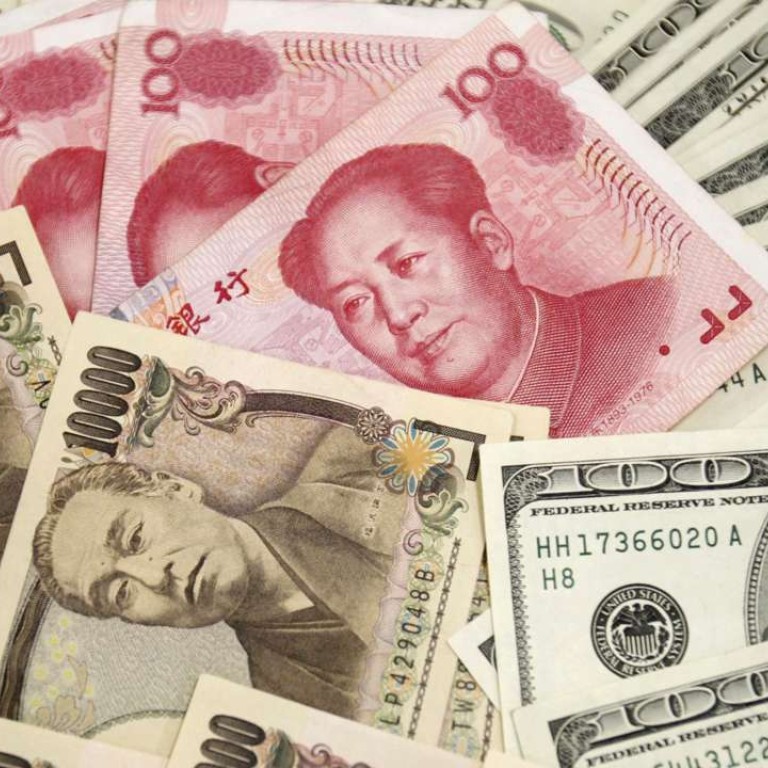
Why the yuan, yen and won are vulnerable to US rate rises
Higher US interest rates will make the dollar more attractive, particularly given the less favourable local conditions in Asia
Friday’s strong US jobs data surely sealed the deal for the Federal Reserve to raise interest rates on Wednesday. Tighter US monetary policy may feed into renewed demand for the dollar and in particular versus Asian currencies.
While higher US interest rates might naturally support capital flows into the United States and by definition underpin the external value of the dollar, that process might well go further if local conditions prompt investors to view domestic currencies in a dimmer light than the greenback. China, Japan and South Korea could be cases in point.
The Bank for International Settlements (BIS), launching its latest quarterly review on March 6, said that emerging market economies “have been caught between a rock and a hard place, the rock being the prospect of a tightening of US monetary policy (even if gradual), an appreciating dollar and their FX currency debt, and the hard place the threat of rising protectionism.”
As China seeks to navigate its own safe economic passage, against a backdrop of tighter US monetary policy, it may be that the yuan has to take some of the strain
On China, the BIS noted that “during the quarter, we saw specific tensions in China’s financial markets” with policymakers coming to grips with “the triple challenge of historically high domestic indebtedness, portions of the corporate sector still indebted in foreign currency and the growing internationalisation of the currency.”
It is the BIS’s opinion that while the tensions within China’s financial markets “remained largely contained and did not spread internationally...Such tensions were just the latest reminder of a global economy that is struggling to find a safe passage towards a sustainable, financial stress-free expansion.”

“China will definitely not devalue the yuan to stimulate exports, it will definitely not engage in a currency war,” said Yi Gang, a deputy governor at the People’s Bank of China, on Friday. But that doesn’t exclude the possibility that the renminbi could depreciate versus the dollar.
Already wrestling with the burden of dollar-denominated debt, and now facing higher dollar debt servicing costs due to Fed tightening, parts of China’s corporate sector might well choose to continue to pay down such exposures, a process which could well become evident in further demand for greenbacks versus yuan.
Neither Seoul nor Tokyo will tighten monetary policy in step with the Federal Reserve and there is therefore every chance that the won and the yen might weaken versus the greenback in the face of Fed rate rises
And that would not be incompatible with the commitment that “the renminbi exchange rate will be further liberalised, and the currency’s stable position in the global monetary system will be maintained,” read out by Premier Li Keqiang at the National People’s Congress on March 5.
Targeting a stable renminbi against a basket of currencies, as Beijing now does, rather than just versus the greenback, allows room for the bilateral dollar/yuan rate to rise in circumstances where China’s currency holds its ground against other constituents of the basket amid broad dollar strength globally.
For example, the changes that China announced to the CFETS (China Foreign Exchange Trade System) renminbi basket on December 29 reduced the dollar’s weight in the index to 22.4 per cent. The Japanese yen and the Korean won now constitute 11.5 and 10.8 per cent respectively, so in combination almost match the dollar’s weighting.
Neither Seoul nor Tokyo will tighten monetary policy in step with the Federal Reserve and there is therefore every chance that the won and the yen might weaken versus the greenback in the face of Fed rate rises.

The Bank of Japan remains resolutely opposed to a firming of the yields on Japanese government bonds. That stance may well continue to lessen the attraction of the yen against the dollar and other currencies.
As for Seoul, the Bank of Korea kept rates unchanged at 1.25 per cent in February and had concerns that “compared to the January forecasts…consumption will likely fall somewhat below the level projected.”
Such concerns are not likely to have abated as South Korea prepares for a new election to replace the legally ousted president Park Geun-hye and with relations between Beijing and Seoul now strained over the deployment of a US anti-missile system. Investors might conclude other currencies are now more attractive than the won.
Higher US interest rates could lend more attraction to the dollar but also prompt investors to focus on local conditions in Asia. The dollar could shine while investors may cast the Chinese yuan, the Japanese yen and the Korean won in a less favourable light.

